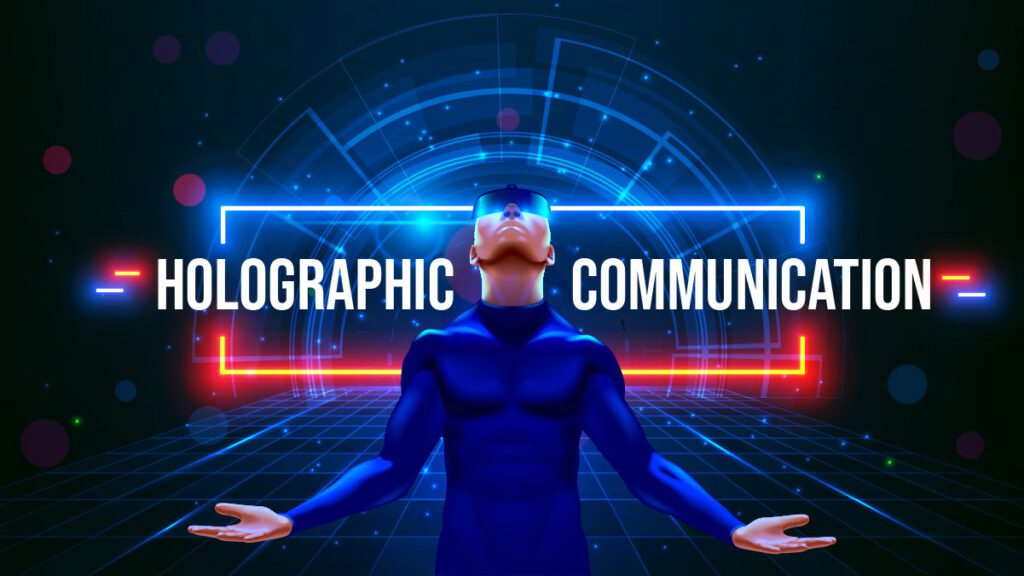
Is holographic communication possible? It is certainly coming closer to reality. What has been pictured in movies will soon be enabled by advances in technology, in particular computing, processing and communication. Ericsson, of the main companies working on this technology defines holographic communication as “real-time capturing, encoding, transporting and rendering of 3D representations, anchored in space, of remote persons shown as stereoscopic images or as 3D video in extended reality (XR) headsets that deliver a visual effect similar to a hologram.”
The work on holographic representation and interaction has been widely in development in the last decade. Several mixed reality devices have been commercialized, notably with the Microsoft Hololens initially launched in 2016, the Oculus Quest, and the HP Reverb. To enable communication however, an advanced wireless networks are needed to complete the missing piece of the puzzle and provide the sought-after real time experience. Normally, although the current 5G standard still have some problems to iron out, it is undoubtedly a key enabler for holographic communication. Soon, you will be able to interact with a 3D hologram of your friend, as if he is close to you, interesting?
Towards 5G Holograms?
Holographic representation has been a very efficient marketing tool used by several operators to promote and demonstrate the advantages of 5G technology, and notably increase its market share. Three UK, the British operator created a large ad at a live event in London in 2019 while Bharti Airtel, the leading operator in India recently showcased the properties of 5G running cricket match experience from the 1983 cricket world cup. This comes at a time where India is preparing to launch 5G services later this year in the country.
The enabling of holographic communication does not come only from the inherent properties of 5G systems, but rather from the ecosystem created around it. Through its streamlined architecture, increased virtualization, higher frequency of operation, and many other novelties, 5G should in principle allow notable improvements over 4G networks in terms of data rates and latencies. Network slicing should further improve the allocation of resources and therefore meet the quality guarantees of different applications. Beside the 5G-specific properties, the proliferation of edge computing solutions should increase the real-time processing capabilities and bring the data very close to the 5G core. The faithfulness of the representation of the hologram depends on many factors, including the timely processing of the input from multiple sensors and the proper transmission of the data through a reliable connection.
The Promise of 6G Holograms?
Holographic communication has been placed among the top use cases expected to come with the sixth generation of wireless communications along the internet of senses and digital twins. This does not come as a coincidence as the maturity of the current 5G systems is expected to come in time with 6G as has been the evolutionary trend in mobile communications with continuous technical releases ensuring uninterrupted evolution of the sector. 6G networks are projected to have gigahertz of bandwidth thanks to the operation in the terahertz bands, a more refined softwarized architecture akin to the current 5G network, high reliance on artificial intelligence, and a seamless integration of the communication network with our daily life providing an augmented digital experience. In the context of holographic communication, the convergence between computing, communications, and processing will streamline the performance of the technology improving the quality of experience perceived by the different users. As any optimization endeavor, the joint control over all the variables involved in generating, transmitted and recreating holographic information will make the experience more natural in the recipient’s eyes.
Needless to say, the Metaverse has invaded the technological world in the last few years without really knowing who owns the Metaverse, its rippling effects have been disrupting different areas, wrestling to basically capture a part of an eventual jackpot. Non-fungible tokens (NFT) have been commodities being exchanged widely in the market. Another consequence of the Metaverse is the accelerated adoption of a virtual digital life. Holographic communication becomes a necessity to provide the required immersive experience and replace our current interaction with small devices. Meta, which is somehow erroneously associated with the Metaverse, has filed recently for a patent, detailing its apparatus of a 3D voice call. The system, in case it is implemented, would allow people to view each other’s physical interactions during the call, instead of static 2D ones in today’s video calls. Other technology companies are certainly working on similar or different innovative applications to integrate the 3D world created by the Metaverse.
A lot of expected technologies, which are not yet commercially ready, will possibly have a large impact on holographic communications. Quantum computing has been a recurring topic due to its radical effects on technology as a whole. The significantly increased computational power, will further improve the perceived holographic experience.
Summary
Whether we are digitally aware or averse, holographic communications is a reality we won’t be escaping in the near future. The trend in the mobile evolution towards its sixth generation, and the sudden, yet staggering adoption of the Metaverse and its uses cases, is taking us into an immersive digital reality. Holographic communication is here to disrupt first, then become a norm in the communication world. The technical ingredients are all maturing well enough to make it one of the standouts use cases in 6G.
“Inside Telecom provides you with an extensive list of content covering all aspects of the tech industry. Keep an eye on our Telecoms, 5G, and 6G news space to stay informed and up-to-date with our daily articles.”